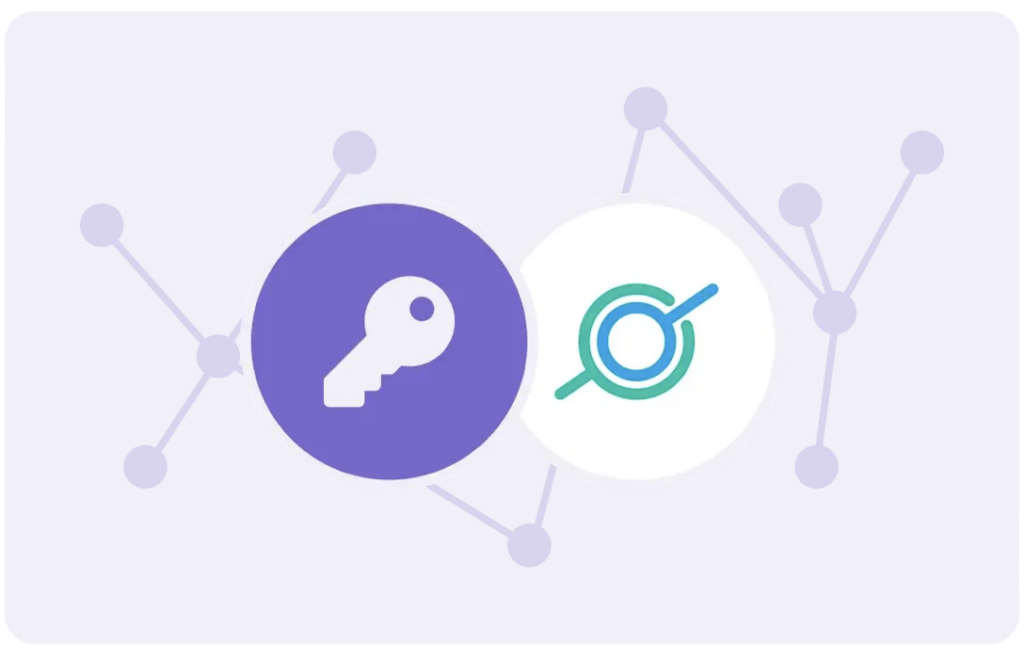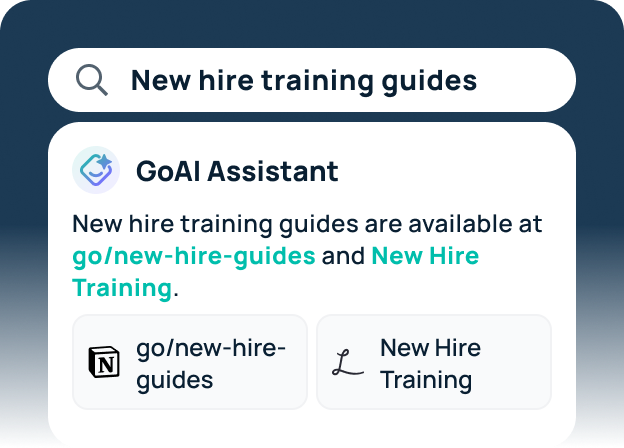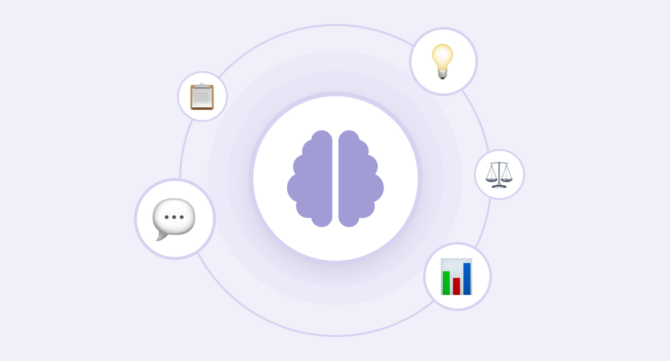When you think of workplace knowledge, what do you think of? Things like documents and processes may come to mind. But, many different types of knowledge need to be managed in the workplace.
This guide explores the different types of knowledge, their relevance in the workplace, and how effective knowledge management can lead to successful outcomes.
We will also look at tools to help you manage and share knowledge efficiently.
Understanding types of knowledge
Knowledge is not a one-size-fits-all concept; it comes in various forms, each serving distinct purposes. Here are the key types of knowledge:
1. Declarative knowledge
Declarative knowledge involves facts, concepts, and information that can be explicitly stated. This form of knowledge is foundational in the workplace, encompassing understanding algorithms, programming languages, and system architectures.
Example: Knowing that HTML is a markup language used to structure web content.
2. Procedural knowledge
Procedural knowledge is the “know-how” – the knowledge of how to perform tasks and procedures. It’s critical in tech roles that require hands-on skills, such as software development, system administration, and network configuration.
Example: Knowing how to set up a server, write code, or troubleshoot a software issue.
3. Tacit knowledge
Tacit knowledge is personal, context-specific, and often difficult to formalize. It includes insights, intuitions, and experiences that individuals accumulate over time. This type of knowledge is often shared through mentorship and direct experience rather than documentation.
Example: A veteran developer’s intuition about the most efficient way to debug a complex piece of code.
4. Implicit knowledge
Implicit knowledge is similar to tacit knowledge but can often be inferred or deduced. It’s the knowledge that isn’t directly documented but can be understood from context or experience.
Example: Understanding the unwritten rules of team collaboration or knowing which colleague to approach for specific expertise.
5. A priori knowledge
A priori knowledge is independent of experience and is based on logical reasoning or theoretical understanding. In the workplace, this might include mathematical principles or theoretical computer science concepts that are true regardless of empirical evidence.
Example: knowing that the sum of two even numbers is always even.
6. A posteriori knowledge
A posteriori knowledge is derived from experience and empirical evidence. It’s the knowledge that you gain through observation and practice.
Example: Learning that a specific coding practice reduces errors based on past project data.
7. Case studies knowledge
Knowledge gained from case studies involves learning from specific examples or scenarios. This type of knowledge is crucial for understanding best practices, learning from past successes and failures, and applying lessons to new situations.
Example: Analyzing a case study on a successful product launch can provide valuable insights for future projects.
Types of knowledge in the workplace
Here’s a look at different types of knowledge that are essential in a work environment:
1. Explicit knowledge
Explicit knowledge is documented and easily shared through manuals, guidelines, and databases. It includes company policies, technical documentation, training materials, and any information that can be readily codified and communicated.
2. Embedded knowledge
Embedded knowledge is integrated into organizational processes, products, and culture. It’s the institutional knowledge that informs how things are done within the company and is often encoded in procedures, tools, and technologies.
3. Cultural knowledge
Cultural knowledge encompasses the norms, values, and practices that shape the workplace environment. It’s crucial for maintaining a cohesive and collaborative culture and influences how knowledge is shared and applied within teams.
4. Relational knowledge
Relational knowledge involves understanding interpersonal dynamics and communication within the workplace. It includes knowing who has the expertise, how to approach colleagues for help, and how to leverage relationships to facilitate knowledge sharing and collaboration.
Types of knowledge management
Companies can implement different types of knowledge management to improve productivity and organizational success.
1. Knowledge capture
Knowledge capture involves identifying and documenting knowledge within the organization. This can be achieved through various means, such as creating knowledge repositories, documenting processes, and capturing insights from experts.
2. Knowledge sharing
Knowledge sharing is the dissemination of knowledge across the organization to ensure that all team members have access to the information they need. Tools like GoLinks facilitate knowledge sharing by allowing employees to create and share intuitive short links to important resources.
3. Knowledge utilization
Knowledge utilization involves applying knowledge to solve problems, make decisions, and drive innovation. This process integrates knowledge into workflows and decision-making processes, ensuring that valuable insights are put into action.
4. Knowledge retention
Knowledge retention focuses on preserving critical knowledge within the organization, particularly when employees leave. This involves capturing tacit and implicit knowledge through interviews, documentation, and knowledge-sharing sessions to ensure that institutional knowledge is retained.
Effective knowledge management tools
In 2023, a Deloitte study found that 87% of companies viewed knowledge management as important — yet only 42% had established a formal strategy.
If you’re ready to implement better knowledge management practices in your organization, here are a few tools to help:
GoSearch: AI enterprise search
GoSearch is an enterprise search tool that connects to all your workplace apps. It allows you to search for work knowledge across your organization in one central search bar — so you don’t have to dig through folders or bother coworkers for the information you need.

GoLinks: Internal link management
GoLinks simplifies knowledge sharing by enabling employees to create memorable, secure short links to important resources. This tool makes it easy for team members to access and share knowledge quickly and efficiently, promoting effective knowledge management across the organization.

Benefits of knowledge management
Effective knowledge management offers numerous benefits that can drive success in tech environments:
- Improved customer service: By providing easy access to knowledge, employees can offer more informed and prompt customer service, enhancing customer satisfaction.
- Enhanced decision-making: Access to comprehensive knowledge allows for more informed decisions, driving better outcomes and competitive advantage.
- Increased productivity: Streamlined knowledge-sharing and retrieval processes save time and reduce redundant efforts, leading to increased efficiency.
- Fostering innovation: With a culture of knowledge sharing and continuous learning, organizations can innovate more effectively and stay ahead of the competition.
- Improved employee engagement: Knowledge management promotes a culture of collaboration and continuous learning, leading to higher employee engagement and satisfaction.
Implementing a successful knowledge management strategy
A successful knowledge management strategy involves several key components:
- Assessment: Evaluate the current knowledge landscape to identify gaps and opportunities.
- Technology: Implement tools like GoSearch and GoLinks to facilitate knowledge capture and sharing.
- Culture: Foster a culture of knowledge sharing and continuous learning.
- Processes: Develop processes for capturing, sharing, and utilizing knowledge.
- Training: Provide training and support to ensure team members can effectively use knowledge management tools and practices.
Types of knowledge sharing in the workplace
Knowledge sharing is essential for maintaining a competitive edge and fostering collaboration. Here are some common methods of knowledge sharing in the workplace:
- Formal training: Structured programs to transfer explicit knowledge.
- Mentoring and coaching: Sharing tacit knowledge through direct interaction.
- Documentation: Creating manuals, guidelines, and case studies to capture and share knowledge.
- Collaborative tools: Using platforms like GoLinks to share knowledge and resources seamlessly.
- Communities of practice: Groups that share a common interest and collaborate to deepen their knowledge.

The knowledge management process
The knowledge management process involves several key steps to ensure effective knowledge capture, sharing, and utilization:
- Identify: Determine what knowledge needs to be captured and shared.
- Capture: Document knowledge through various means, such as creating knowledge repositories or conducting interviews.
- Store: Organize knowledge in a way that makes it easily accessible.
- Share: Disseminate knowledge across the organization using tools like GoLinks.
- Utilize: Apply knowledge to drive decision-making and problem-solving.
- Review: Continuously evaluate the effectiveness of the knowledge management strategy and make improvements as needed.
FAQs
What are the main types of knowledge?
The main types of knowledge include declarative, procedural, tacit, implicit, a priori, and a posteriori knowledge. Each type serves different purposes and is important for various aspects of work and learning.
Why is procedural knowledge important?
Procedural knowledge is crucial because it involves knowing how to perform tasks and procedures, which is essential for operational efficiency and problem-solving in tech roles.
How does knowledge sharing improve customer service?
Knowledge sharing ensures that employees have access to up-to-date information and best practices. This enables them to provide timely and accurate customer service, thereby improving customer satisfaction.
What is the role of tacit knowledge in the workplace?
Tacit knowledge, being personal and experience-based, helps in making intuitive decisions and solving complex problems that are not quickly addressed by explicit knowledge. It’s often shared through direct experience and mentoring.
How can GoLinks and GoSearch facilitate knowledge management?
GoLinks and GoSearch streamline the knowledge management process by making it easy to create, find, and share important information quickly, enhancing efficiency and collaboration among team members.
What are the benefits of successful knowledge management?
Successful knowledge management leads to improved decision-making, increased productivity, a competitive advantage, and enhanced customer satisfaction. It also fosters innovation and continuous learning within the organization.
How does a knowledge management strategy provide a competitive advantage?
A well-executed knowledge management strategy ensures an organization can leverage its expertise and experience to innovate, respond to market changes, and maintain a competitive edge.
What are the different forms of knowledge in an organization?
In an organization, knowledge can be explicit, embedded, cultural, or relational, each contributing to the overall knowledge ecosystem and supporting various aspects of work and collaboration.
What is a knowledge management process?
A knowledge management process involves capturing, sharing, utilizing, and retaining knowledge to improve organizational performance and foster continuous learning. It ensures that valuable knowledge is effectively integrated into workflows and decision-making.
How does effective knowledge management enhance customer satisfaction?
Effective knowledge management ensures that employees have access to the knowledge they need to address customer issues promptly and accurately, leading to higher customer satisfaction and loyalty.
Improve your org’s knowledge management
Understanding and managing the different types of knowledge within an organization is crucial for fostering a culture of innovation, collaboration, and efficiency.
And knowledge management tools like GoSearch and GoLinks can help!
Learn more here or schedule a demo to see these tools together in action.
Search across all your apps for instant AI answers with GoSearch
Schedule a demo

















